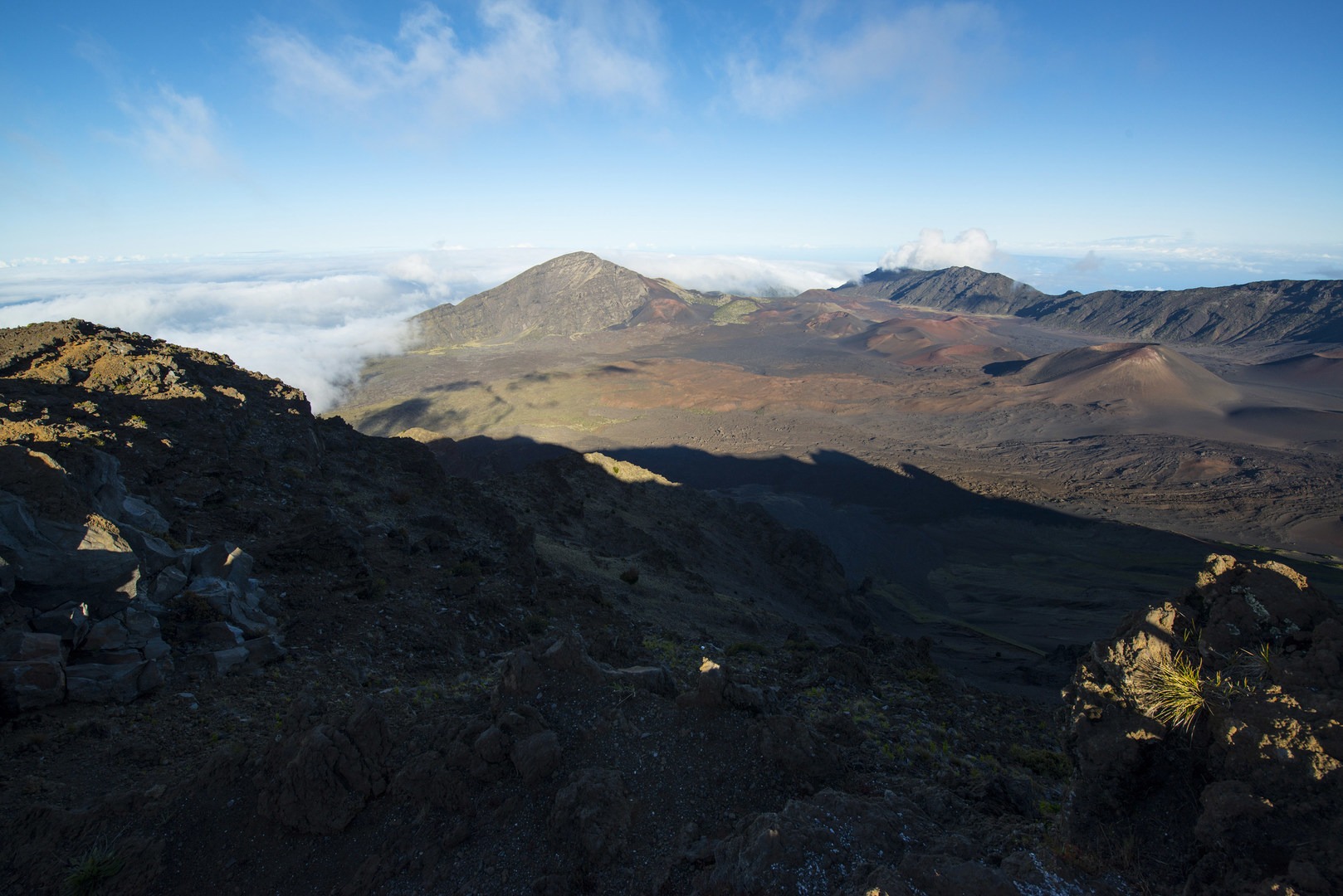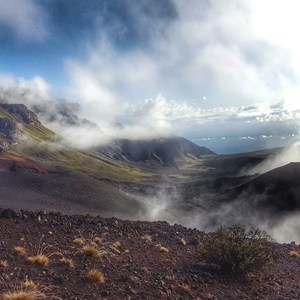While most Hawaiian vacation dreams are made of beach lounging, boogie boarding and the freshest cuisine, it would be unfortunate to visit Maui and skip Haleakelā National Park. Over 30,000 acres of land surrounding the island’s highest point are protected within park boundaries, and a staggering 24,719 acres of that is wilderness. Making your way up to Kalahaku Overlook, then (ideally) on to Pu’u’ula’ula Summit / Red Hill + Haleakalā Observatory, you’ll get a chance to observe some of the island’s rarest and most stunning birds, animals and plant life, and get incredible insight into how untamed these islands truly are.
A cold-summer subtype of Mediterranean climate characterizes this area. Here, fewer than four months a year see an average temperature above 50 degrees, and no winter month has an average temperature below 32 degrees. One fascinating specimen that thrives here and almost nowhere else on the planet: the Haleakalā silversword. Even amid coveting tourists, munching deer and invasive plant species, the plant has endured. Please leave these plants alone. Rather, take many pictures and spend a good while pondering the existence of this quirky plant, which are at risk due to the rising temperatures of climate change.
Another rare sighting at the Kalahaku Overlook is the Hawaiian dark-rumped petrel. Long ago, this bird could be found all over the islands, but now, its home has been mainly restricted to the national park. These small white birds tend to roost near the left side of the observation deck.
For geologists, this overlook is heaven. The Koolau Gap and Kaupo Gap, an amazing number of cinder cones and lava missiles can all be spotted from this vantage point. The lava missiles, measuring up to 5-feet long, are gobs of lava that were shot into the air with such force that they were able to cool almost entirely before they hit the ground. Have fun trying to wrap your brain around that one as you look out over a hillside completely littered with them.

























Comments
Sign In and share them.